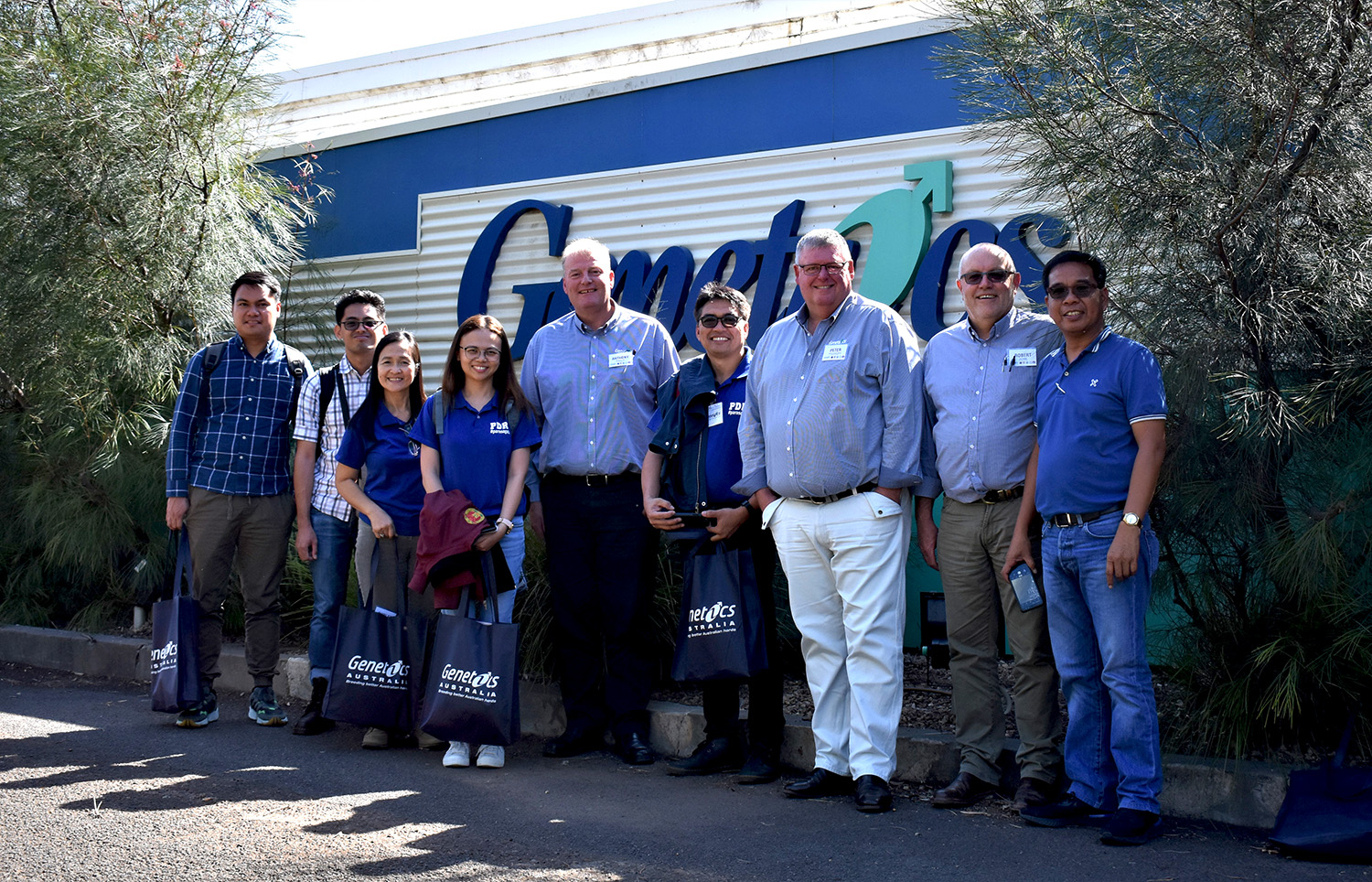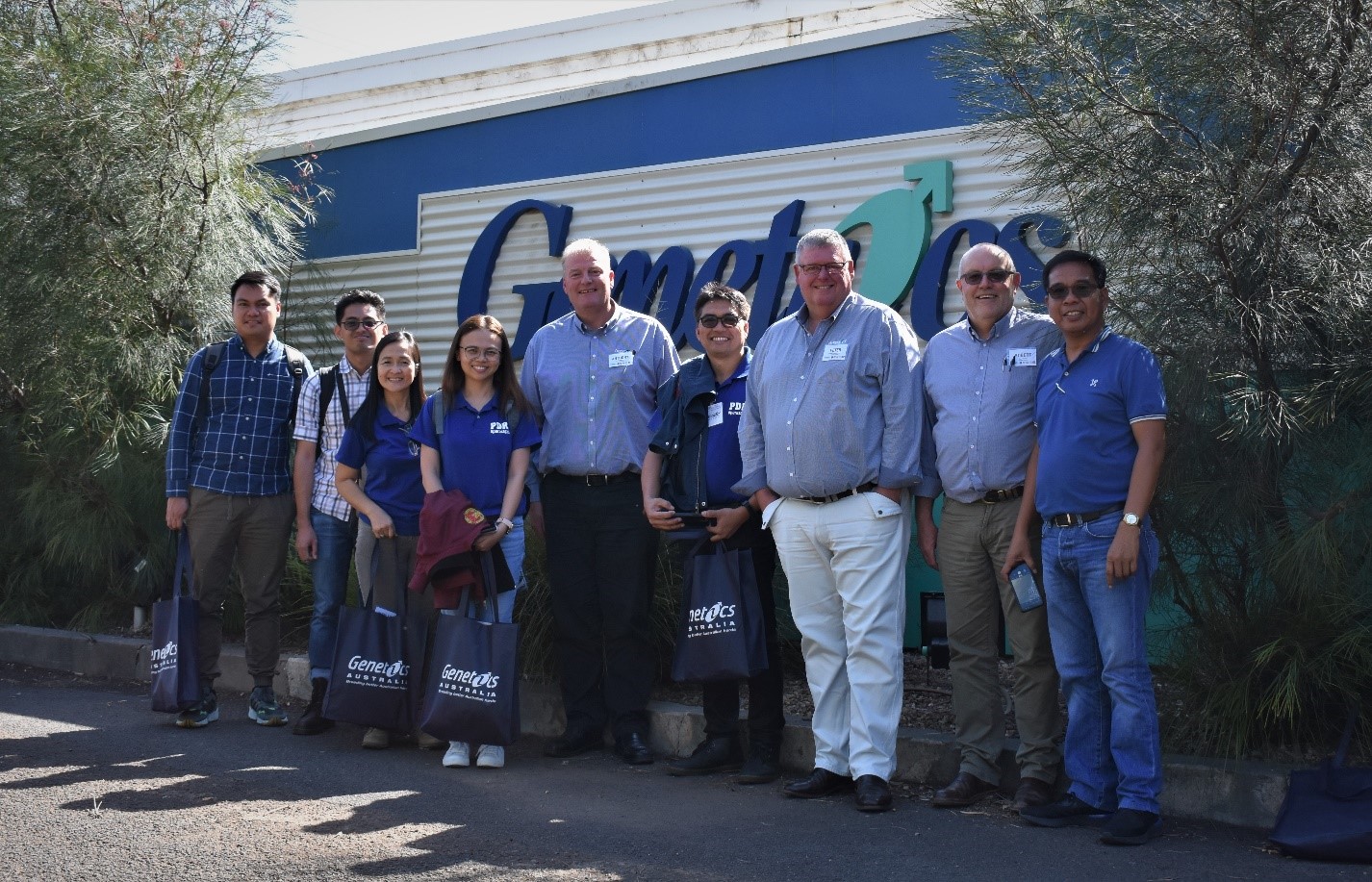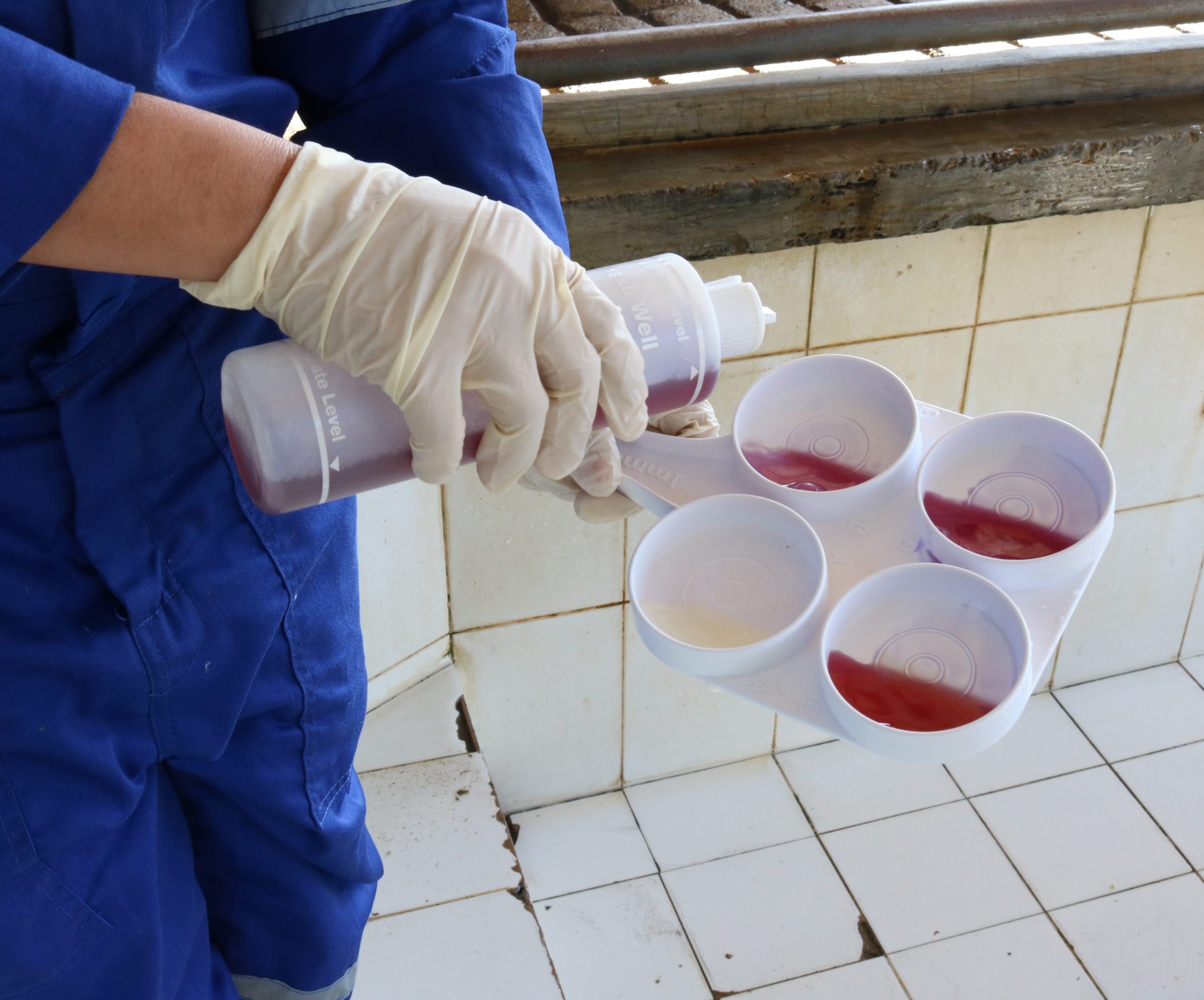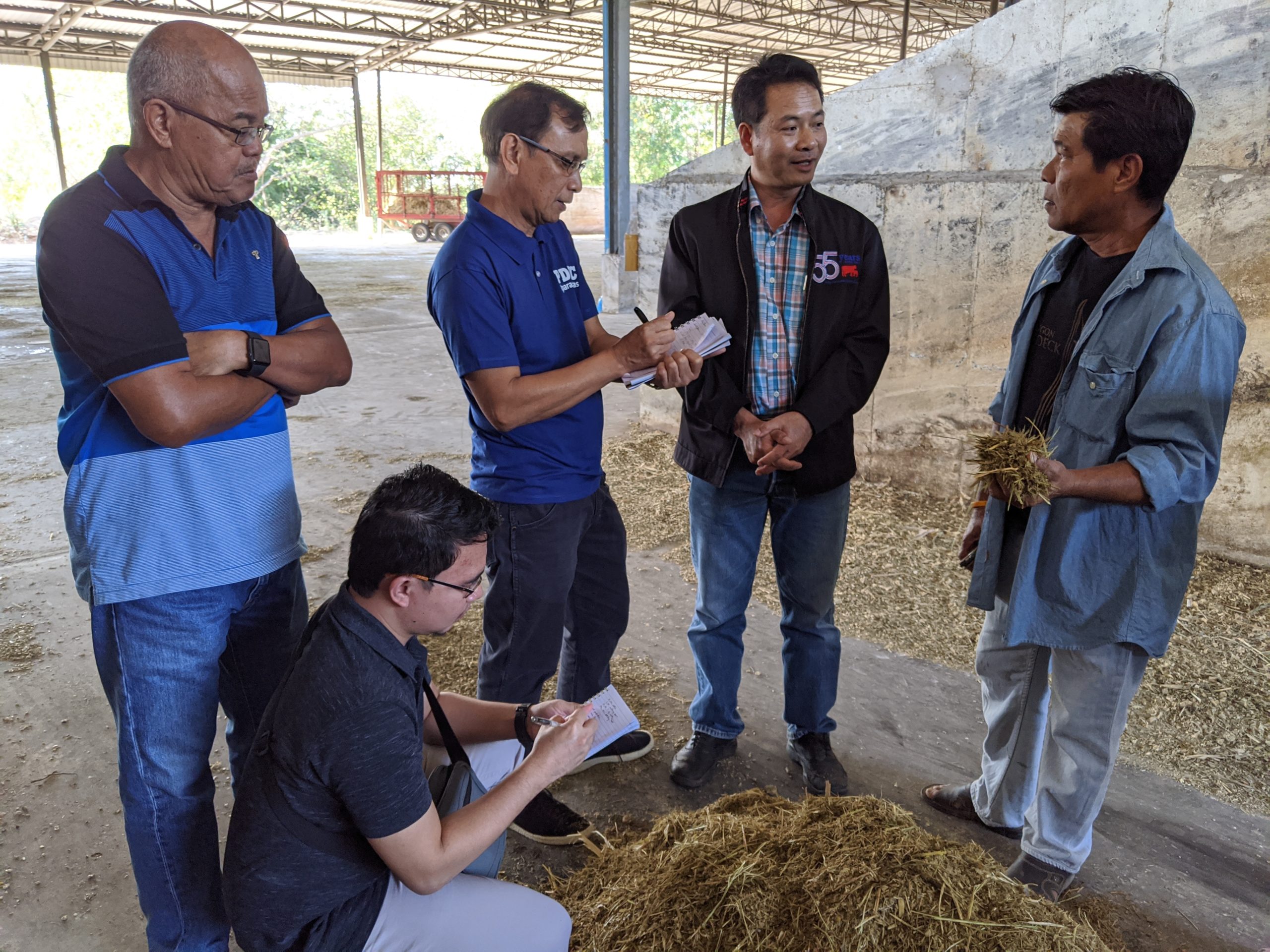Just a few months before the enhanced community quarantine was imposed in the Philippines, one of the project teams at DTRI went to Victoria, Australia. The activity was part of the project Application and Improvement of Embryo Transfer (ET) and Artificial Insemination (AI) Technologies as Tools Toward Achieving the Desired Number of Genetically Superior Breeder Dairy Cattle.
Continue readingDTRI, DA-BAR launches NIR Technology-based project
DTRI, UPLB – With the aim to have a fast, effective, and inexpensive feed analysis system, the project “Calibration and Optimization of Near Infrared Reflectance Spectroscopy for Nutrient Content Determination of Feedstuffs: A Tool for Reduced Feed Analyses Cost for Small-Hold Farmers and Government Research/Regulatory Institutions” was launched last September 3, 2019 at the Dairy Training and Research Institute (DTRI) Auditorium.. The project, funded by the Department of Agriculture’s Bureau of Agricultural Research (DA-BAR) is a collaboration of DTRI-UPLB, DA Regional Feed Laboratories, state universities, and other stakeholders that would benefit from the project. This project is just among the various projects being launched and conducted by DTRI in gearing towards modernization and collaborative dairy science research.
Those present in the project launch were Dr. Elpidio M. Agbisit J. (Dean, College of Agriculture and Food Science); Dr. Amado A. Angeles (Director, DTRI) and project staff; DA-BAR representatives: Marnelie Gadong-Subong, Jay Bermas, Rhea Desalesa, and Ian Panaga; and the UPLB Accounting Office represented by Joan Mendoza, Rhodora Violanta, and Ellen Asegurado.
The results of the research project will enable feed manufacturers and users decide on what feed and feed ingredients they will use for their animals. This will also pave the way for farmers to afford services on identifying nutrient composition of their raw materials and complete feeds. Lastly, the study results will also benefit the different DA laboratories in the Philippines.
NIRS project visits DA Feed Laboratories, SUCs
To forge a stronger collaboration among stakeholders, the Near-Infrared Reflectance Spectroscopy (NIRS) project team visited Department of Agriculture (DA) feed laboratories and State Universities and Colleges (SUCs) last December 17 to 19, 2020. This is part of the information dissemination strategies of the said project of DTRI on NIRS. Among those visited were the Regional Feed Chemical Analysis Laboratory of the DA (DA-RFCAL) in regions I, II, and III; Cagayan State University (CSU); and Central Luzon State University (CLSU).
Apart from data accumulation from the laboratories, the project team conducted meetings with representatives from the above-mentioned institutions. In the meetings, DTRI director and project leader Dr. Amado A. Angeles seized the opportunity to address the need to strengthen research, most especially in the dairy industry. Moreover, Dr. Angeles presented the need for faster and more affordable feed analysis services to cater farmers, students, and researchers to help them in the improvement of their respective fields. In turn, the visited laboratories and SUCs gave their full support for the project in the hopes to further cement contributions of their respected institutions to our agriculture.
The project team targets to visit DA-RFCAL and SCUs throughout the country for wider scope of collaboration and service.
PDRC Project 1 Team visits key AI and genetics facility in Australia
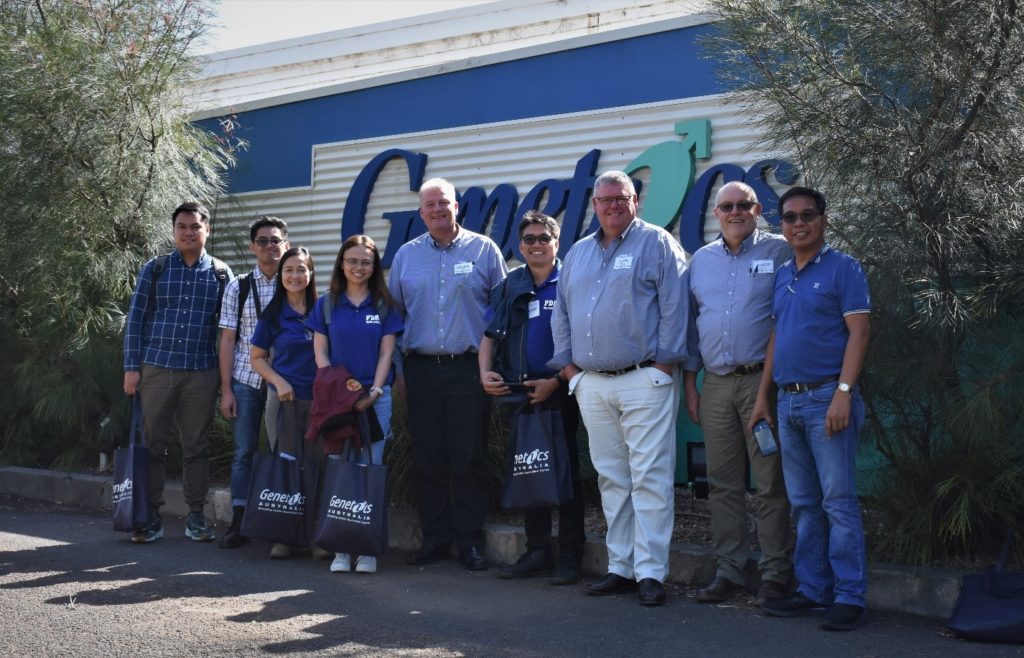
Six representatives from the Philippine Dairy Research Consortium (PDRC) Dairy Enhancement Program under Project 1 Application and Improvement of Embryo Transfer (ET) and Artificial Insemination (AI) Technologies as Tools Toward Achieving the Desired Number of Genetically Superior Breeder Dairy Cattle visited key facilities in Victoria, Australia last November 10-15, including the artificial insemination (AI) laboratory and stud farm at the head office of Genetics Australia; AgriBio Centre at La Trobe University; and Dairy Australia Southbank.
During the visit, the team learned the basics of rectal palpation from Mr. Brad Pickford at his training center and farm in Byuduk, Victoria. Mr. Pickford developed the Breed’n Betsy model (see image below), an artificial cow simulator device, which is a valuable aid for hands-on training on AI and embryo transer (ET).
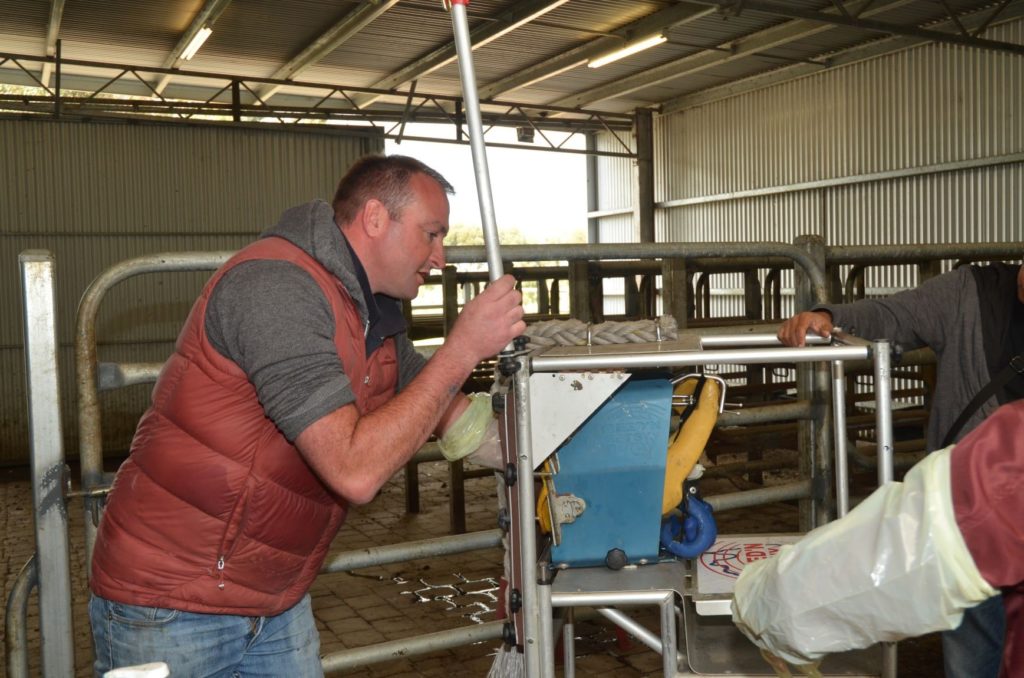

The team also participated in a lecture and demonstration at the in vitro fertilization (IVF) laboratory of Dr. Richard Fry at Speedbreed Donor Centre in Gnarawarre, Victoria.
The activity was conducted under Project 1 headed by Dr. Amado A. Angeles of UPLB-DTRI, and is a part of the PDRC Dairy Enhancement Program funded by the Department of Science and Technology through one of its agencies, the Philippine Council for Agriculture, Aquatic and Natural Resources Research and Development (DOST-PCAARRD).
PDRC Project 4 benchmarks somatic cell in milk of dairy cows in Batangas
The DTRI Project 4 team, led by Dr. Demetrio B. Marcial Jr., initiated in October 2019 the testing of raw milk in three dairy cattle farms in Tanauan and Lipa City, Batangas using the ImmunoCell California Mastitis Test (CMT) kits. This activity is part of the Philippine Dairy Research Consortium (PDRC) Project 4 on the Development of Farm-specific Protocols for the Reduction of Subclinical Mastitis in a Dairy Enterprise. It aims to establish the baseline for the somatic cell level of milk in cooperating farms.
The CMT is a qualitative cow-side test, which can be used by farmers to determine the somatic cell count (SCC) in raw milk of individual cows and the bulk milk prior to selling to processors. The SCC in milk is an indication of on-going bacterial infection and may be used as a tool to diagnose subclinical mastitis cases in the farm.
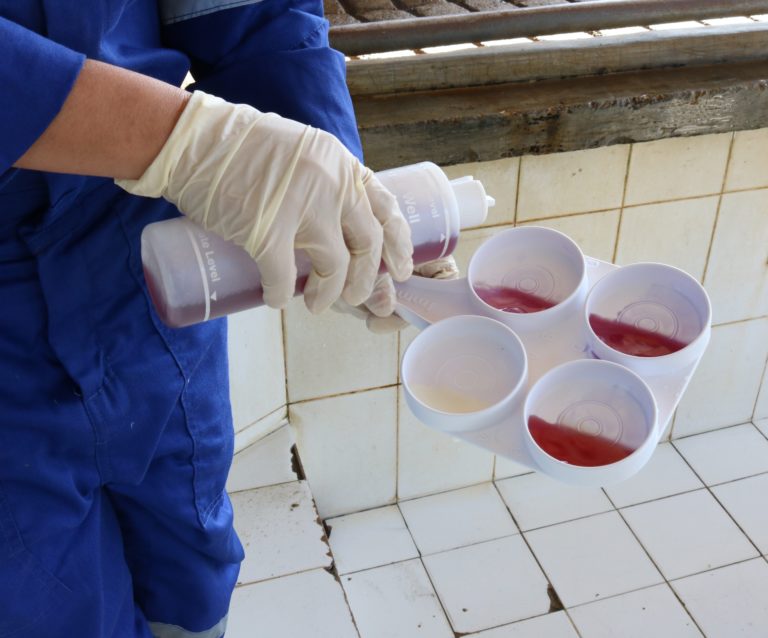
The DTRI Project 4 is funded by DOST-PCAARRD through the Philippine Dairy Research Consortium (PDRC) Dairy Enhancement Program entitled Assisted Reproduction, Nutrition, and Health Interventions For Enhanced Dairy Cattle Productivity and Milk Safety. It aims to create specific management protocols to reduce subclinical mastitis in dairy farms. The reduction in subclinical mastitis should eventually increase the overall milk production of cooperating farms. The project started in December 2018 and will run for three years until the end of November 2021.
PDRC Project 3 Benchmarks Dairy and TMR Operations in Thailand

Four project personnel under the DOST-PCAARRD funded R&D project, “Development of Farm-Specific Precision Feeding System and Forage Production Protocols for Increased Productivity and Profitability of Dairy Farms” participated in a five-day benchmarking of dairy and TMR operations in Thailand. Project leader, Menandro Loresco, and project staff members Dr. Cesar Sevilla, Christian Lualhati, and Gerard Guadayo participated in the activity which was organized by the Dairy Farming Promotion Organization (DPO) of the Thailand Ministry of Agriculture and Cooperatives. The main objectives were to evaluate the efficiency and profitability of feeding total mixed rations (TMR) in dairy cattle herd and to apply the learnings to the project and possibly extend their potential application to the local dairy sector. The travel covered the period December 2-6 in Saraburi Province, Thailand. Mr. Nawanon Chantaprasarn, chief of the Dairy Development Division of the Dairy Research and Development Department of DPO served as the coordinator.
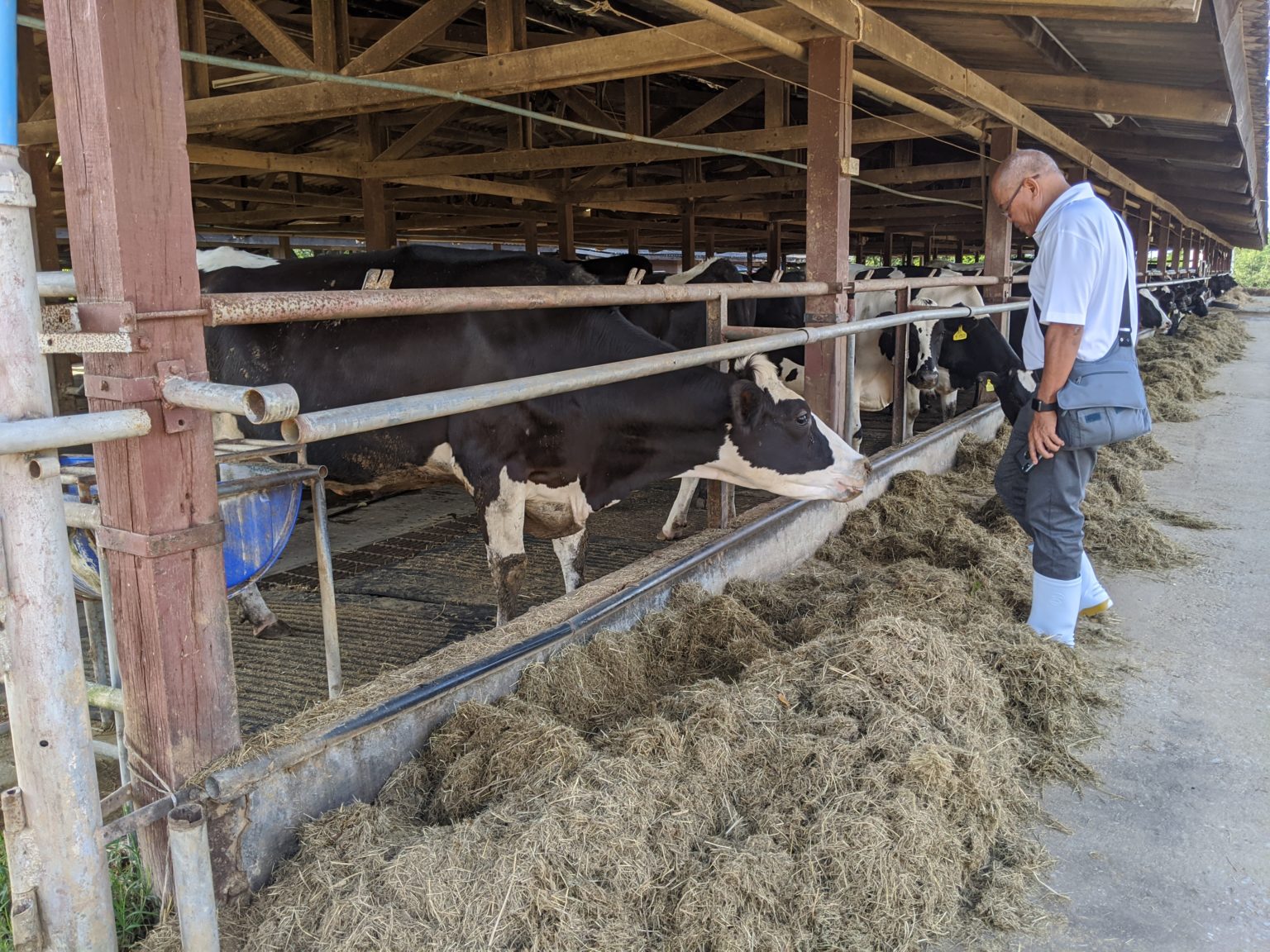
During this activity, the participants observed and studied the system of feeding of dairy cattle in select dairy cooperatives and farms in Saraburi, Thailand. It was observed that in order to maximize income over feed cost, some of the Thai dairy cooperatives produce TMR in large volumes daily to supply the feed requirement of about 10% of their members. The average daily milk production of cows in the visited dairy farms, which are members of these cooperatives, ranged from 12-14 L per day with a lactation period of 10 months. One of the members reported that his income over feed cost from a cow producing 19-20L of milk per day can be as high as 200 Baht (equivalent to 339 PhP) per day when using TMR. The concentrate component of the TMR that they produce has roughly the same formula as ours which is basically corn and agro-industrial protein source-based mixture. The roughage component consists of corn silage, rice straw, grass silage/hay, and soya pulp.
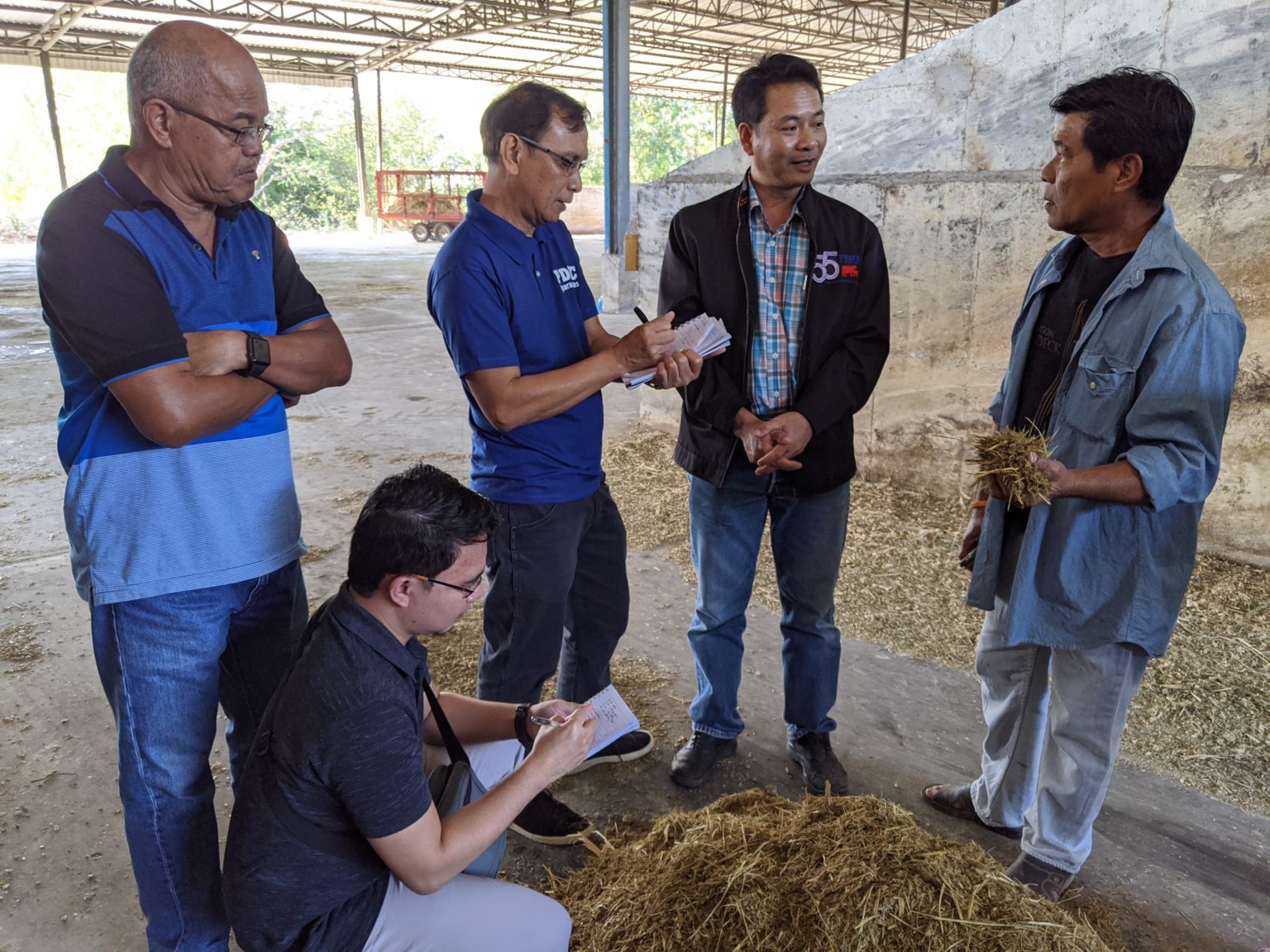
One of the main reasons for the viability of dairy farming in Thailand is the strong support from their Ministry of Agriculture and Cooperatives to the dairy cooperatives. Most of the vital TMR production and milk processing equipment and facilities being used by the dairy cooperatives were donated by or loaned from the Ministry. Because of this, the members are able to procure high quality and formulated TMR daily at a very reasonable price. This scheme reduces the farmers’ workload and allows them to focus on feeding the cows and in harvesting and transporting the raw milk to the cooperative’s processing plant for steady profits. In addition, some of the Thai dairy cooperatives maintain a replacement heifer rearing program wherein female calves are bought from the members and reared until sexual maturity. The farmers then have the option to purchase them back as replacement heifers. This system further enhances the efficiency and profitability of the farms as they only need to focus their resources to productive animals.
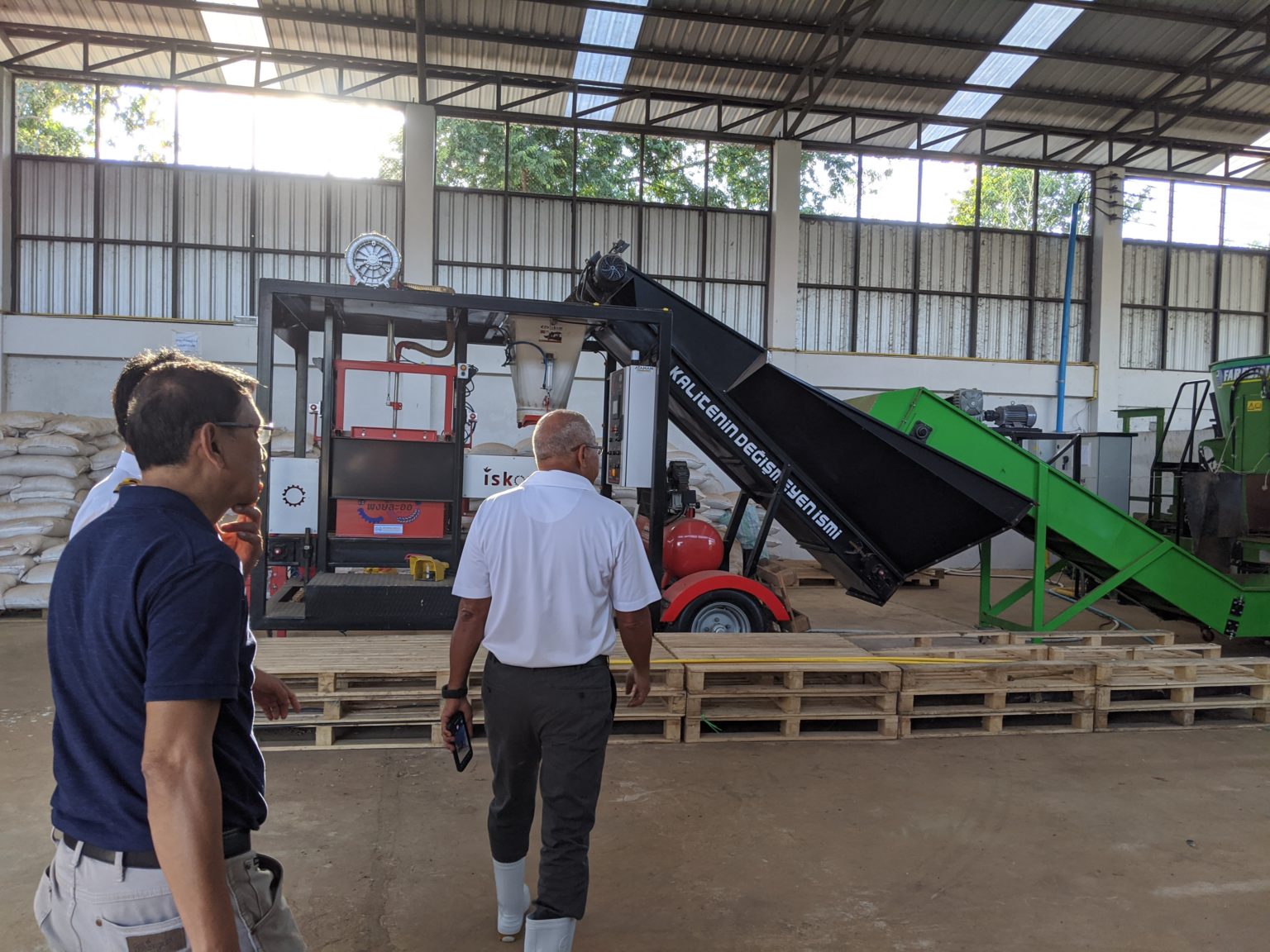
In addition to the strong government support, another advantage of the Thai dairy industry over that of the Philippines is the much cooler weather which is more conducive to dairy farming and reduces the incidence of heat stress to dairy cattle with genotypes coming from temperate breeds like Holstein. However, in terms of the feed resources that they use in the production of the TMRs, Thailand is comparable to the Philippines. The basal/macro ingredients that Thai dairy producers use include corn silage, rice straw, Guinea and Napier grass hay/silage, cassava chips, soya pulp, ground corn, and soybean meal. Except for soybean meal, which is largely imported, the major raw materials in the production of TMR in Thailand are all available in our country. This means that if proper feed production and conservation techniques are applied, it is possible for us to produce TMR on a large scale and sustain the year-round TMR manufacture for consistent feeding of quality ration to dairy animals. Couple this with systems that assist the members such as the replacement heifer scheme from the dairy cooperatives and the local dairy sector will hopefully attain significant growth in the years to come.

